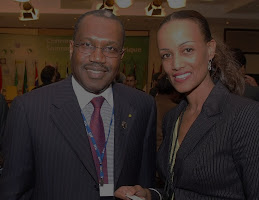Specific Project Experience
Afri can Union(AU)- Strategic Info System Network Integrated Infrastructure
can Union(AU)- Strategic Info System Network Integrated Infrastructure
The Requirement:
- Provide ICT capabilities i.e. network/intranet access, collaborative computing/email and networks etc.. and communications/automation tools of both personal and enterprise-wide productivity to users at the General Secretariat.
- Provide facilities for research and enhanced information dissemination such as organizational website, library and information documentation facilities, electronic printing networks etc...
- lnternetworking infrastructure allows embassies and other institution to connect and share via remote access services to access intranet information resources.
- Possibility of scaling the project by linking to Regional offices of AU, sub-regional organizations and other international organizations.
- Can be regarded as pilot scale project for a continent-wide network.
The Solution:
- UNDP Sponsored Capacity Building Project that utilizes the information Systems Support component for the establishment of an early warning system for the AU Conflict Management Center.
- UNOPS Project Services component
- Local Company to provide the required technology supply, systems integration services, project implementation and overall delivery. Contract award to www.cbsintl.com.
RI promote sustainable growth
Historically, the African domestic market has been fragmented by high internal and external barriers. In 1991, the Abuja Treaty was adopted, establishing a timetable towards the creation of a pan-African Economic Community by the year 2015.
The existing Regional Economic Communities were to be the foundation. This is an ambitious objective, but the first building block must be the creation of free trade areas that can be the foundation for wider economic integration at the regional and continental level.
There are huge challenges posed by the proliferation of regional economic groupings and protocols across the continent, characterised by overlapping membership.
However, progress has been made in the past decade. Most regions have now adopted a common external tariff structure (usually involving no more than three to four bands) – the most recent example being the EAC in January 2005 – while some, including CEMAC, WAEMU and member countries in COMESA, have also removed custom duties among themselves.
Recent ECA estimates that welfare gains from regional integration in sub-Saharan Africa alone, could be of the order of US$1.2 billion, reinforcing the view that Africa’s own liberalisation offers major gains.
 can Union(AU)- Strategic Info System Network Integrated Infrastructure
can Union(AU)- Strategic Info System Network Integrated Infrastructure.jpg)








